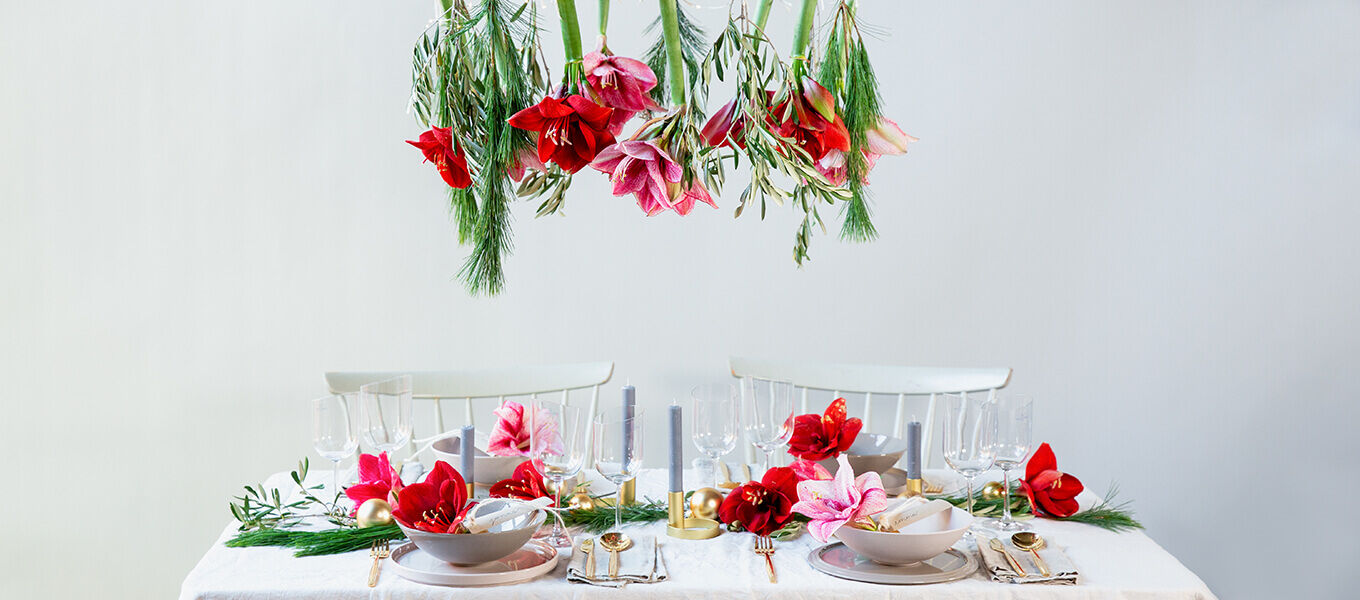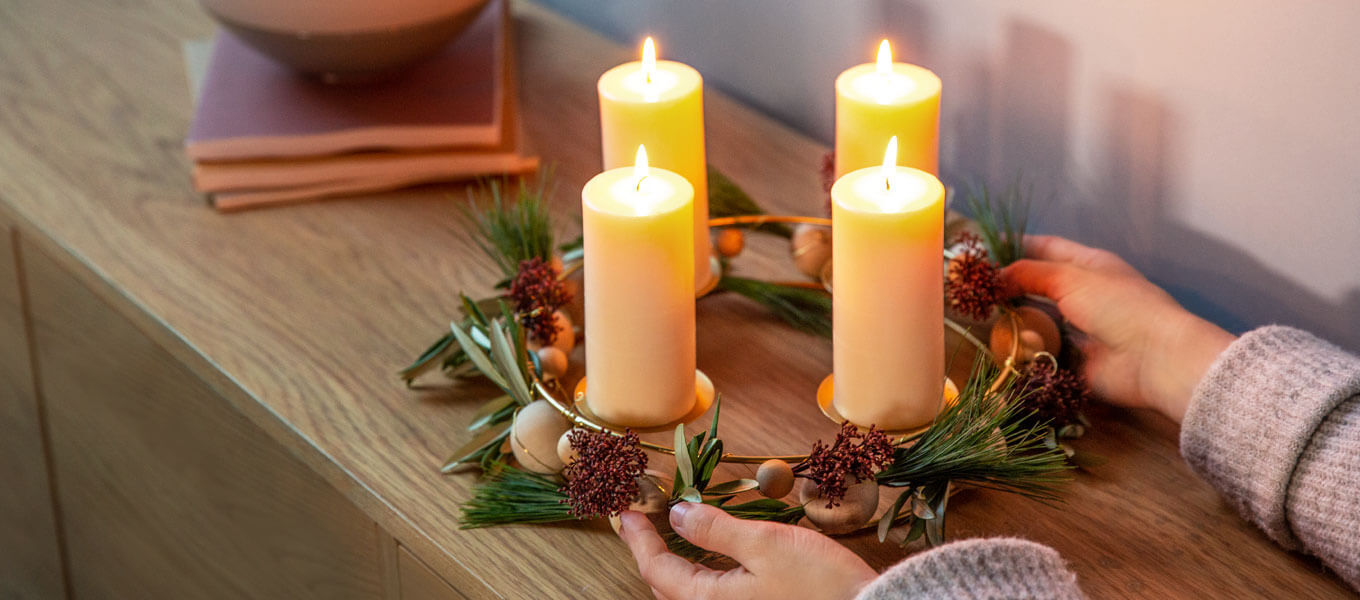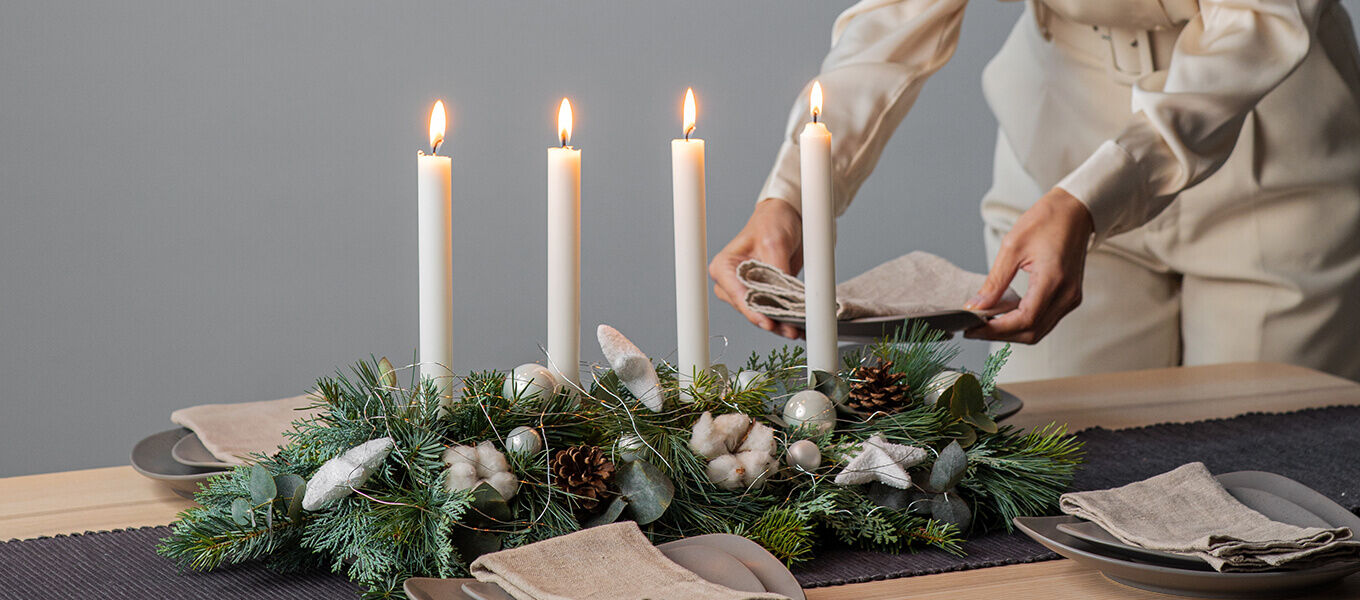
Advent decorations
This year, the first Sunday of Advent is on November 30th. The term "Advent" originated in the Christian faith and represents the time of waiting and preparation for the arrival of the Son of God, Jesus Christ. Pope Gregory established the current time frame in the 7th century when he fixed the number of Sundays at four. Since then, the Christian Advent season has lasted between 22 and 28 days – from the first Sunday of Advent until December 24th – and symbolizes contemplative moments with family, love of neighbor and joyful anticipation of the festive season. To create the perfect Advent atmosphere, it's a good idea to start thinking about decorating your home now. Your Fleurop florist will be happy to advise you and of course has many suitable wreaths and flower arrangements in stock in his shop.
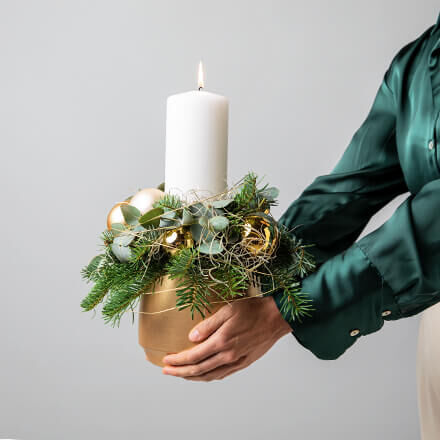
Origin of the Advent wreath
The tradition of putting up a wreath during Advent is still relatively young. The Protestant theologian Johann Heinrich Wichern, who ran a home for orphans in Hamburg, came up with the idea in 1839. In December, he was often asked by the children how long it was until Christmas. To shorten the waiting time, Wichern quickly built a wooden wreath from an old wagon wheel and placed 28 candles on it: 24 small red ones and four large white ones. He then hung this wreath of candles in the orphanage. From then on, the children lit another red candle every evening during Advent and an additional white candle every Sunday in Advent, so that all the candles were lit on the Sunday before Christmas Eve. A few years later, Wichern also began to decorate the wooden wreath with green fir branches. Other Protestant and later Catholic parishes followed his example. Today, Advent wreaths for domestic use are available in a wide variety of designs, but only with four candles on them for reasons of space. The classic version made of green fir branches with red candles and Christmas accessories is still the most popular.
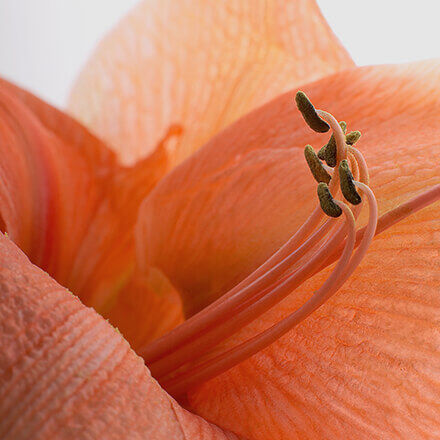
Pre-Christmas flowers
Typical design elements in the contemplative pre-Christmas period include wreaths, candle arches, pyramids, Herrnhut stars, incense smokers and nutcrackers. Of course, many people also attach great importance to the matching floral decorations. Red and white flowers traditionally dominate in combination with green branches and dried fruit. Bouquets of amaryllis, anthuriums, Christmas roses, gerberas and carnations are particularly popular during Advent. Poinsettias, also known as poinsettias, are also almost indispensable and are offered by specialist retailers in a wide range of colours. Floristically enhanced and in a stylish container, these mainly home-grown houseplants look particularly attractive.

Blooming branches of St Barbara
The custom of St Barbara's branches is also widespread during Advent. These are fruit tree branches that are cut on 4 December - St Barbara's Day - and then placed in a vase of water in a warm room. They are supposed to bloom until Christmas Eve and thus bring joy to the gloomy and cold winter months. According to regional folklore, the blossoming of apple, pear or plum tree branches on 24 December also promises good luck in the coming year. If you like this beautiful idea but don't have your own garden, you are of course welcome to ask your Fleurop florist if they can help you out with branches of barbara.














